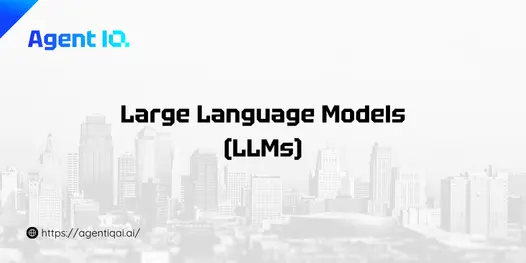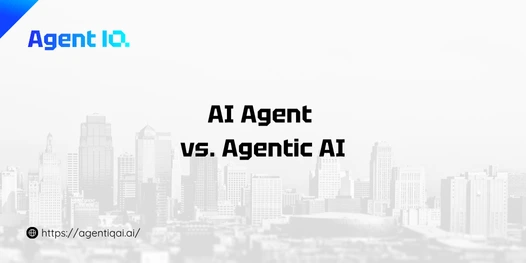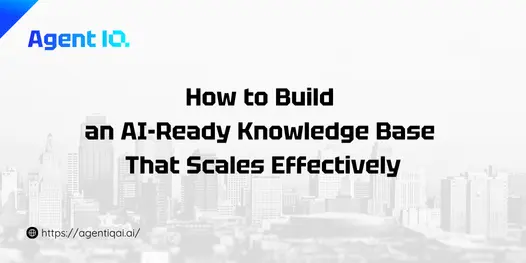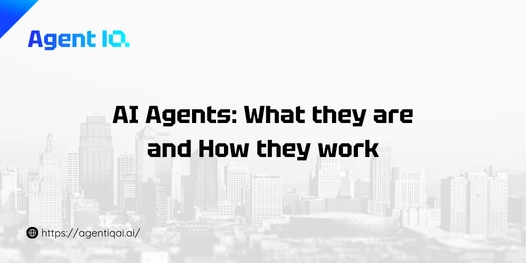Unlock AI Potential: Choosing the Right Enterprise AI Platform
- Publised October, 2025
Maximize ROI with the right Enterprise AI Platform. Enable scalable automation, secure data governance and future-ready digital transformation.
Table of Contents
Toggle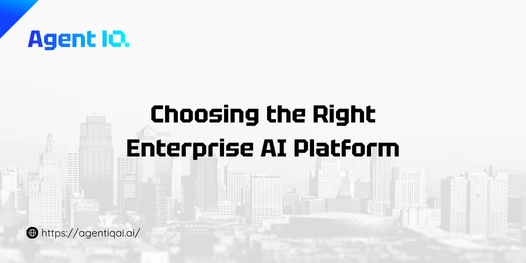
Key Takeaways
- Selecting an enterprise AI platform requires aligning technology with business strategy.
- Core platform capabilities, security, governance, and vendor considerations are critical.
- TCO, user experience, and a structured selection process ensure successful AI adoption.
Understand Your Business Needs and AI Strategy
Choosing the right enterprise AI platform begins with a deep understanding of your business needs. It’s not about adopting technology for its own sake, but about strategically aligning AI capabilities with specific business challenges and goals to maximize ROI.
Identify Specific Business Challenges and Goals
What are the specific pain points you’re trying to solve or the opportunities you’re hoping to unlock with AI? Consider these examples:
- Automating repetitive tasks: Streamline operations and free up human capital.
- Improving customer service efficiency: Enhance customer satisfaction and reduce support costs.
- Gaining quicker insights: Accelerate decision-making and improve business agility.
- Optimizing supply chains: Reduce costs and improve efficiency.
- Enhancing decision-making: Make more informed decisions based on data-driven insights.
Assess Your Organization's AI Maturity
Where does your organization stand in its AI journey? Are you in the early stages of experimentation, focusing on departmental solutions, or aiming for enterprise-wide AI scaling? Understanding your current state is crucial for selecting a platform that aligns with your capabilities. Consider the following:
- Current State: Are you in an experimental phase or aiming for enterprise-wide AI?
- Internal Capabilities: Evaluate existing data science teams and IT infrastructure.
- Platform Alignment: Choose a platform that supports current and future AI use.
Define Desired Outcomes and ROI
Establish clear, measurable goals for your AI initiatives. What specific outcomes are you hoping to achieve, and how will you measure success?
- Clear Objectives: Set measurable goals for AI initiatives.
- ROI Metrics: Quantify success with tangible financial returns.
- Strategic Impact: Connect platform choice to digital transformation objectives.
Evaluate Core Platform Capabilities
The technical capabilities of an enterprise AI platform are fundamental to supporting the entire AI lifecycle. Let’s explore the key considerations.
Scalability and Performance
Can the platform handle your current and future data and user demands?
- Data Volume: Handle terabytes to petabytes without performance degradation.
- User Demands: Support a growing number of concurrent users.
- Elasticity: Microservices architecture for dynamic resource allocation.
- Real-time Processing: Low-latency inferencing for real-time data analytics.
- Hardware Optimization: GPU acceleration for demanding AI tasks.
Data Integration and Management
A robust AI platform must seamlessly integrate with your existing data sources and provide tools for data quality management.
- Seamless Integration: Connectors and APIs for existing data sources.
- Data Silos: Overcome data fragmentation.
- Data Quality: Features for data cleaning, transformation, and validation.
- Diverse Data Types: Support structured, semi-structured, and unstructured data.
- Data Governance Practices: Robust data governance is essential.
AI/ML Model Development and Customization
The platform should support a wide range of machine learning models and offer flexibility for customization.
- Model Variety: Support diverse machine learning models.
- User Accessibility: Low-code/no-code environments for business users.
- Model Tuning: Capabilities for fine-tuning and reinforcement learning.
- Generative vs. Predictive AI: Support both paradigms effectively.
- Model Hub: Centralized repository for managing AI models.
MLOps (Machine Learning Operations) and Automation
Automated processes are vital for the efficient deployment and management of AI models.
- Automated Lifecycle: Tools for automating data preparation and model training.
- CI/CD Integration: Support continuous integration and continuous delivery pipelines.
- Workflow Orchestration: Manage complex AI workflows.
- Version Control: Robust versioning for models and datasets.
Observability and Evaluation
Real-time monitoring and evaluation tools are essential for maintaining model performance.
- Real-time Monitoring: Track model performance in production.
- Debugging and Tracing: Diagnose issues within AI models and pipelines.
- Feedback Loops: Mechanisms for gathering feedback and improving models.
- Built-in Evaluation: Internal benchmarks and performance metrics.
- Explainability (XAI): Transparency into model decisions for trust and compliance.
Prioritize Security, Governance and Compliance
Security, governance, and compliance are non-negotiable aspects of enterprise AI, especially when handling sensitive data.
Data Security and Privacy
Protecting data is paramount. Look for these features:
- Encryption: End-to-end encryption for data at rest and in transit.
- Access Controls: Strict Role-Based Access Control (RBAC) and Attribute-Based Access Control (ABAC).
- Audit Trails: Comprehensive logging of all data access and model interactions.
- Data Anonymization/Pseudonymization: Protect sensitive information.
AI Governance and Ethical Considerations
Ensure responsible AI usage through transparency and fairness.
- Transparency: Understand how AI models operate and make decisions.
- Fairness and Bias Mitigation: Tools to detect and reduce algorithmic bias.
- Human Oversight: Mechanisms for human intervention and validation.
- Responsible AI Frameworks: Built-in policies and guidelines for ethical AI usage.
Regulatory Compliance (GDPR, HIPAA, etc.)
Adherence to industry standards is crucial.
- Industry Standards: Adherence to data privacy and security regulations.
- Data Residency: Control data storage locations to meet compliance requirements.
- Certifications: Vendor certifications and compliance with standards.
- Legal Reporting: Features for auditability and reporting.
Assess Ecosystem Compatibility and Vendor Considerations
An AI platform must integrate within the existing IT ecosystem, and the vendor should be a reliable strategic partner.
Interoperability with Existing IT Infrastructure
Seamless integration is key.
- API Support: Robust API capabilities for integrating with business applications.
- Cloud Strategy Alignment: Compatibility with the organization’s existing cloud infrastructure.
- Open Standards & Open Source: Support for open standards and open-source tools.
- Deployment Options: Flexibility to deploy AI workflows across hybrid, VPC, or on-premise infrastructure.
Vendor Reputation, Support, and Training
Choose a vendor with a solid track record and comprehensive support.
- Vendor Track Record: Research the vendor’s history and customer reviews.
- Support Services: Quality of customer support and availability.
- Training & Documentation: Comprehensive onboarding programs and training resources.
- Community Ecosystem: An active user community for shared learning.
Avoiding Vendor Lock-in and Future-Proofing
Ensure flexibility and avoid being tied to a single vendor.
- Data & Model Portability: Ease of exporting data and models.
- Open Innovation: Support open-source integration.
- Vendor Roadmap: Clarity on the vendor’s vision for future AI advancements.
- Flexibility: Integrate best-in-class AI models as business needs change.
Consider Total Cost of Ownership (TCO) and ROI
Cost-effectiveness is a major factor, but a holistic view of TCO is essential.
Transparent Pricing Models
Understand the different pricing structures and potential hidden costs.
- Pricing Structures: Understand subscription-based and usage-based models.
- Hidden Costs: Clarify additional charges for data storage and advanced features.
- Cost Management: Look for price alerts and cost optimization tools.
Beyond Initial Costs: Maintenance and Operational Expenses
Consider ongoing expenses for computing capacity, personnel, and maintenance.
- Infrastructure Costs: Expenses for computing capacity and storage.
- Personnel Costs: Salaries for data scientists and ML engineers.
- Maintenance & Updates: Costs associated with model retraining and software updates.
- Support: Fees for ongoing vendor support.
Calculating Potential Return on Investment
Quantify the tangible and intangible benefits of your AI initiatives.
- Tangible Benefits: Reduced operational costs and increased revenue.
- Intangible Benefits: Enhanced decision-making and improved customer experience.
- Business Case Development: Build a clear business case that balances costs with anticipated features.
Prioritize User Experience and Adoption
User adoption is paramount for the successful implementation of any technology.
Intuitive Interface and Ease of Use
A user-friendly interface minimizes the learning curve.
- User-friendliness: A clean and easy-to-navigate interface.
- Learning Curve: Minimize the time required to learn the platform.
- Accessibility: Design considerations for users with varying technical proficiencies.
Collaboration Features and Skill Level Accommodation
Facilitate collaboration and cater to different skill levels.
- Cross-team Collaboration: Tools that facilitate collaboration among data scientists and business analysts.
- Role-based Interfaces: Tailored experiences for different user roles.
- Low-code/No-code Options: Empower non-technical users to build AI solutions.
The Selection Process: From Shortlist to Deployment
A structured and phased approach ensures a thoughtful decision and smooth integration.
Conducting Proof-of-Concepts (POCs)
Real-world testing is essential.
- Real-world Testing: Run small-scale POCs using actual enterprise data.
- Practical Evaluation: Assess performance and integration capabilities.
- Vendor Engagement: Evaluate the responsiveness of vendor support.
Involving Key Stakeholders
Assemble a cross-functional team to ensure alignment and buy-in.
- Cross-functional Team: Include representatives from IT, operations, data science, legal, and finance.
- Alignment & Buy-in: Ensure the platform meets diverse departmental needs.
- Executive Sponsorship: Secure high-level support for significant investments.
Continuous Monitoring and Optimization
AI adoption is a continuous journey, not a one-time deployment.
- AI as an Ongoing Project: AI adoption is a continuous journey.
- Performance Tracking: Implement mechanisms for regular review and tracking.
- Iterative Refinement: Encourage an agile approach to refining models.
- Feedback Loops: Establish formal processes for collecting user feedback.
Choosing an enterprise AI platform is a critical decision that requires careful consideration of your business needs, technical capabilities, security requirements, and vendor partnerships. By following a structured approach and prioritizing user experience, you can unlock the full potential of AI and achieve sustainable competitive advantage. Start your assessment today to embark on your AI journey!
FAQs about Enterprise AI Platforms
What is an enterprise AI platform?
An enterprise AI platform is a comprehensive software suite designed to support the entire AI/ML lifecycle at an organizational scale. It enables businesses to build, integrate, and operationalize AI applications securely and efficiently across various departments and use cases.
Why is choosing the right AI platform critical?
Choosing the right platform directly influences a company’s ability to innovate, optimize operations, make data-driven decisions, and achieve digital transformation goals. A poor choice can lead to financial losses, project failures, data silos, security vulnerabilities, and vendor lock-in.
What’s the difference between a general AI tool and an Enterprise AI platform?
A general AI tool is often a point solution for a specific task with limited integration capabilities. An enterprise AI platform offers an integrated, end-to-end solution designed for organizational scale, including robust data integration, MLOps, governance, and security.
What are some common pitfalls to avoid when looking for Enterprise AI Platforms?
- Ignoring actual business needs.
- Underestimating the Total Cost of Ownership (TCO).
- Neglecting critical data integration and data quality challenges.
- Overlooking robust security, governance, and compliance requirements.
- Failing to involve key stakeholders across departments.
- Choosing a platform that lacks scalability or flexibility for future needs.
- Falling into severe vendor lock-in.
Your Knowledge, Your Agents, Your Control



